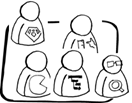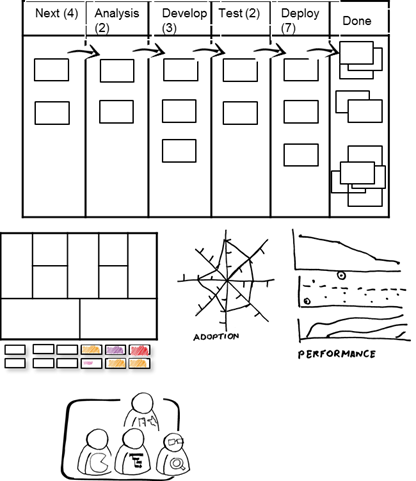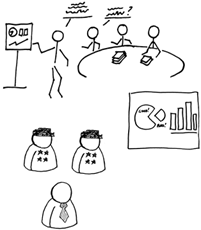
The most direct way to reduce this confusion is to make sure that change agents spend the time necessary to not only educate change recipients on agile and lean techniques, but also on the Lean Change as well. We want to help folks going through the change process to take ownership of their Change Canvas, Improvement Experiments, and any other aspects. When starting a large organization no transformation, we recommend that change agents really immerse themselves with a group of change recipients that they are working with, to the point of even considering themselves a core member of the team, at least at first.

While the Lean Change method does have many interlocking parts, the artifacts it produces are naturally conducive to agile style "information radiators". Information radiators are Lo Fidelity, physical, highly visual charts and dashboards placed in locations that are close to team and/or in highly trafficked areas.

Many teams adopting agile habit of physical or virtual card wall such as an agile task board or Kanban system. If using physical artifacts to good practice to place all of the Lean Change related artifacts right beside the physical card while being used. This includes the change Canvas, including any Improvement Experiments, as well as any charts are dashboards that can show the accumulated results of various improvement experiments. We have tended to include one or more capability charts, showing depth of adoption in various agile tech needs, as well as one or more performance charts, including statistical process control and cumulative flow diagrams. Burn down charts, and burn up charts are also good options.

Other change stakeholders such as business customers, executives, and management will also need to be informed of progress. A typical approach is to prepare status reports and run status meetings every week or two. This can occur an awful lot of overhead, and still not convey the right information.

A better approach where possible, is to bring other change stakeholders to where the various information radiators are already located and hold a review session of front of those various radiators. In situations where this was not feasible we have taken photos of the physical charts, and displayed them as part of our review sessions.
 .
. Read the Rest of Lean Change - Chapter 4: the Validated Change Lifecycle
- Validated Change Lifecycle Using Kotter, Leanstartup and Kanban
- State 1: Agree on the Urgency of Change
- State 2: Negotiate the Change
- State 3: Validate Adoption
- State 4: Verify Performance
- Realizing a Change Canvas through the Validated Change Lifecycle
- Instantiating the Lifecycle Effectively Using Information Radiators
No comments:
Post a Comment